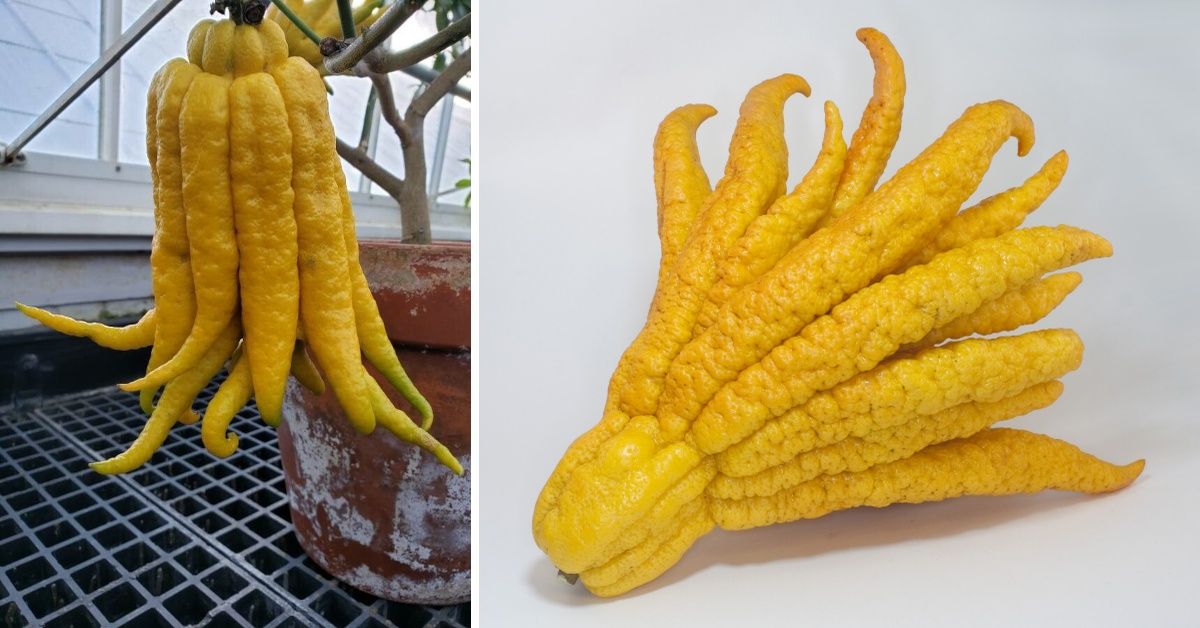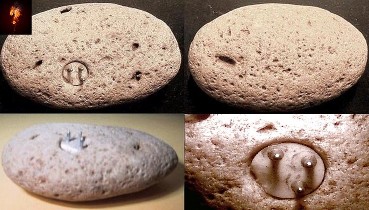

This Citron Called Buddha’s Hand Looks like a Giant Lumpy Lemon With Fingers and Smells Like Heaven
Meet he Edward Scissorhands of the citrus family. Yes, it’s edible, before you ask.

Have you ever seen a fruit that looks like a lumpy lemon with fingers? If you have, then you probably encountered a Buddha’s hand citron (Citrus medica var. sarcodactylis), also called the fingered citron, one of the most unusual and fragrant citrus fruits in the world. It has a long history of cultivation in China and Japan, where it is valued for its symbolic meaning and medicinal properties.
The Buddha’s hand citron is a type of citron, a citrus fruit that has a thick rind and very little pulp or juice. The citron is one of the oldest citrus fruits from which all other citrus types developed through natural hybrid speciation or artificial hybridization. It is believed to have originated in India or Southeast Asia.
The Buddha’s hand citron is a special variety of citron that has segments that split at the end, resembling fingers. The number of fingers can vary from a few to more than 20, and they can be straight or curved. The fruit can grow up to 30 cm long and weigh up to 4 kg.

The various cultivars and adaptations of this citron variety create a spectrum ranging from “open-hand” varieties with segments that spread outward to “closed-hand” varieties where the fingers remain closely packed together. Additionally, there are fruits with partially fused basal sides and segmented apical sides, creating a half-fingered appearance.

The Buddha’s hand citron has a very distinctive aroma that is sweet, floral, and lemony. Some people compare it to lavender, jasmine, or bergamot. The fragrance is so strong that it can fill a room with its scent. The fruit is often used as a natural air freshener or perfume, and it can last for several weeks without rotting. The fruit is also edible, although it has no juice or pulp. The rind can be candied, zested, or sliced and added to salads, desserts, or drinks. The rind contains essential oils that have antibacterial, antifungal, and anti-inflammatory properties. The fruit is also rich in vitamin C and antioxidants.
The Buddha’s hand citron has a special significance in Chinese and Japanese culture, where it is associated with happiness, longevity, and good fortune. The fruit is often displayed as an offering in temples or as a decoration during the Lunar New Year. The fruit’s name comes from its resemblance to the hand of Buddha, which is often depicted with long fingers in a gesture of blessing. The fruit is also considered a symbol of harmony, as the fingers represent the unity of the five elements: wood, fire, earth, metal, and water.

If you are curious about this amazing fruit and want to experience its heavenly smell for yourself, you can find it in some specialty stores or online (it runs at about $24 per pound). You can also grow your own Buddha’s hand citron tree if you have a sunny spot and a large pot. The tree is evergreen and produces flowers and fruits throughout the year. The fruit usually ripens in winter and can be harvested when the fingers are fully formed and yellow.
Recommended Videos
 Sagano Bamboo Forest In Kyoto, Japan338 views
Sagano Bamboo Forest In Kyoto, Japan338 views 10+ Incredibly Colorful Birds Who Look More Like A Painting3105 views
10+ Incredibly Colorful Birds Who Look More Like A Painting3105 views-
Advertisements
 Photographer Captured Earth Pyramids In Italy1068 views
Photographer Captured Earth Pyramids In Italy1068 views Astounding Facts About Primates that Never Cease to Amaze1219 views
Astounding Facts About Primates that Never Cease to Amaze1219 views 50 Times Dresses Looked So Bad,27098 views
50 Times Dresses Looked So Bad,27098 views Photographer Captured Bees Sleeping In Flower And It’s As Cute As It Sounds909 views
Photographer Captured Bees Sleeping In Flower And It’s As Cute As It Sounds909 views Blue-eyed Ground-Dove1224 views
Blue-eyed Ground-Dove1224 views 30 Fruits And Vegetables That Look Like Other Things6369 views
30 Fruits And Vegetables That Look Like Other Things6369 views
You may also like
 Creatonotos gangis is a species of arctiine moth in South East Asia and Australia.
Creatonotos gangis is a species of arctiine moth in South East Asia and Australia.  Meet The Quetzalcoatlus, The Giraffe-Sized Pterosaur That Was The Largest Flying Dinosaur To Ever Live
Meet The Quetzalcoatlus, The Giraffe-Sized Pterosaur That Was The Largest Flying Dinosaur To Ever Live  Hummingbirds Turn into Rainbows in Amazing Photos by Christian Spencer
Hummingbirds Turn into Rainbows in Amazing Photos by Christian Spencer  A 100,000 Year Old Electrical Connector Found Embedded In Stone
A 100,000 Year Old Electrical Connector Found Embedded In Stone